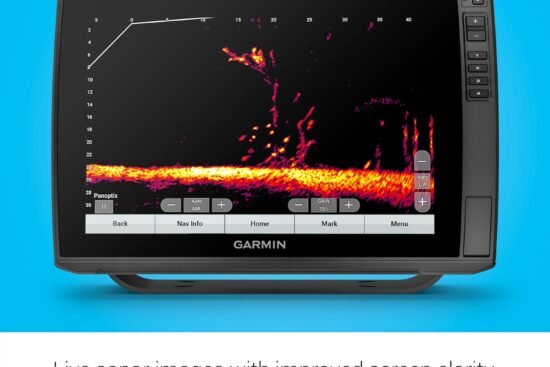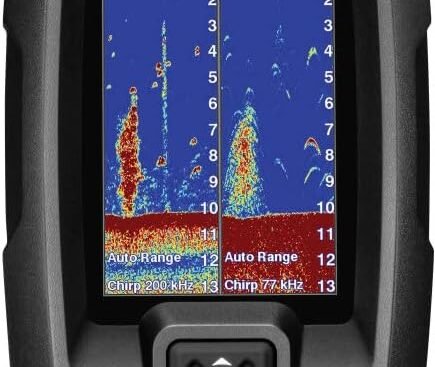
In today’s fast-paced world where we rely heavily on technology, the longevity of our devices’ batteries plays a crucial role in our daily lives. After all, who hasn’t experienced the panic of a low battery warning in the middle of an important meeting or while on a long flight? If you are considering purchasing a new laptop model, you must be wondering: how long does the battery typically last on this laptop model? Wonder no more – in this article, we will explore the battery life of a specific laptop model, giving you all the information you need to make an informed decision. So sit back, relax, and let’s dive into the world of laptop battery life.
Battery Specifications
Battery Type
The battery type refers to the technology used in the laptop’s battery. Common battery types include lithium-ion (Li-ion) and lithium-polymer (Li-Po). Li-ion batteries are widely used due to their high energy density and longer life span compared to other battery technologies. They are also known for their slower self-discharge rate, which means they can retain their charge for longer periods of time when not in use.
Battery Capacity
Battery capacity refers to the amount of charge the battery can hold, usually measured in watt-hours (Wh) or milliampere-hours (mAh). A higher capacity battery will typically provide a longer battery life. Laptop models may have different battery capacities, so it’s important to consider this specification when looking for a laptop with good battery life.
Battery Life
Battery life refers to the amount of time a laptop can run on a single charge. It is influenced by various factors, including the laptop’s hardware, software, and usage patterns. The battery life is usually measured in hours, and it can vary significantly depending on the laptop model and usage conditions.
Factors Affecting Battery Life
Processor
The processor is one of the key components that affect battery life. Processors with higher performance levels tend to consume more power, leading to shorter battery life. On the other hand, processors with lower power consumption, such as those designed for ultrabooks or low-power laptops, can extend the battery life. Choosing a laptop with an energy-efficient processor can help maximize battery life.
Display
The laptop’s display can significantly impact battery life. Models with larger screens and higher resolutions tend to consume more power. Additionally, laptops with touchscreens generally consume more power than those without. Adjusting the screen brightness and using power-saving settings can help conserve battery life.
Usage
How you use your laptop also affects battery life. Tasks that require more processing power, such as gaming or video editing, tend to drain the battery faster. On the other hand, basic tasks like web browsing or word processing consume less power. Understanding your usage patterns and adjusting your activities accordingly can help prolong battery life.
Background Applications
Running multiple applications in the background can drain the battery faster. Programs like antivirus software, file synchronization services, or instant messaging apps constantly utilize system resources and consume power. Closing unnecessary applications and keeping only essential ones running can help conserve battery life.
Connectivity
Connectivity options like Bluetooth, Wi-Fi, and cellular data can also impact battery life. If you’re not using these features, disabling them can help save power. Additionally, laptops with newer Wi-Fi or Bluetooth standards may be more energy-efficient, providing better battery life when compared to older versions.

Battery Performance Metrics
Idle Time
Idle time refers to the battery life when the laptop is not actively being used. It represents the battery’s ability to retain its charge while not performing any tasks. Longer idle time indicates a more efficient battery, as it can retain its charge for longer periods of inactivity.
Web Browsing
Web browsing is one of the common tasks performed on laptops. It involves loading web pages, running scripts, and displaying content. Battery life during web browsing can be an important metric for those who use their laptops for internet browsing extensively. Manufacturers often provide estimated battery life for web browsing to give users an idea of how long they can expect the laptop to last under this usage scenario.
Video Playback
Watching videos, whether from streaming services or stored locally, can be demanding on the battery. Video playback drains battery quickly due to the continuous rendering and processing of high-resolution content. Battery life during video playback is a key metric for multimedia enthusiasts who frequently watch movies, TV shows, or other video content on their laptops.
Gaming
Gaming is a resource-intensive task that heavily relies on the laptop’s processor, graphics card, and display. Gaming laptops are often equipped with high-performance hardware to handle demanding games, but this can come at the expense of battery life. The battery performance during gaming is crucial for gamers who prefer playing without being plugged into a power outlet.
Optimizing Battery Life
Power Settings
Most laptops offer power management settings that can be adjusted to optimize battery life. These settings control how the processor and other system components operate, balancing performance and power consumption. Choosing power-saving modes or customizing power settings according to your preferences can help extend battery life.
Screen Brightness
Reducing the screen brightness can have a significant impact on battery life. The display is one of the main power consumers in a laptop, and lowering the brightness level can help conserve energy. It is recommended to adjust the screen brightness to a comfortable level that still allows for easy visibility while minimizing power usage.
Background Applications
Closing unnecessary applications and processes can boost battery life. Background programs, especially those that constantly update or sync data, can consume power even when not actively being used. Managing startup programs and using task manager tools can help identify and close resource-intensive applications, ensuring optimal battery performance.
Connectivity Settings
Enabling power-saving modes for Wi-Fi or Bluetooth can help save battery life. Disabling Wi-Fi or Bluetooth when not in use can prevent the laptop from constantly searching for networks or devices, reducing power consumption. Adjusting power settings for these connectivity options can lead to noticeable improvements in battery life.

Battery Health and Maintenance
Calibrating the Battery
Calibrating the battery periodically can help maintain its accuracy and performance. This involves fully charging the battery, allowing it to drain completely, and then recharging it. It helps the battery’s internal circuitry to accurately measure the charge level and provide more precise battery life estimates. Consult the manufacturer’s guidelines on how to calibrate the battery for your specific laptop model.
Keeping the Device Cool
Excessive heat can have a negative impact on battery life and overall performance. Overheating can cause the battery to degrade faster and reduce its capacity. Keeping the laptop in a well-ventilated area, using cooling pads or stands, and ensuring the cooling fans are clean and functional can help prevent overheating and maintain optimal battery health.
Software Updates
Regularly updating the laptop’s software, including the operating system and device drivers, is important for battery health and performance. Software updates often include bug fixes, performance optimizations, and power management improvements. Keeping the software up to date can help ensure that the laptop operates efficiently, maximizing battery life.
Battery Life Expectations
Manufacturer’s Claim
Manufacturers typically provide estimated battery life values based on standardized testing procedures. These estimates are often mentioned in the laptop specifications and product descriptions. It’s important to note that the manufacturer’s claim may not reflect real-world usage scenarios, as individual usage patterns and settings can vary significantly.
User Reviews
User reviews can provide valuable insights into a laptop’s battery life performance. Real-life experiences shared by users who have used the laptop extensively can give a more accurate picture of the battery life under different usage conditions. Reading multiple reviews and considering the overall feedback can help gauge the battery life expectations.
Battery Degradation Over Time
Battery degradation is a natural process that occurs over time. Constant charge cycles and exposure to heat can lead to a gradual decrease in battery capacity. While manufacturers aim to provide long-lasting batteries, it’s important to understand that battery life may decrease over the course of usage. Managing battery health and following maintenance practices can help mitigate the impact of battery degradation.
Tips for Extending Battery Life
Carrying a Charger
If you anticipate being away from a power source for an extended period of time, it’s advisable to carry a charger or a portable power bank. This ensures that you have a backup power source available when the battery runs low. Many power banks are compact and lightweight, making them convenient to carry in a laptop bag or backpack.
Using Battery Saver Mode
Most laptops offer a battery saver mode that can be enabled to conserve power. These modes adjust various settings to optimize battery life, such as reducing background processes, dimming the screen brightness, and limiting system performance. Enabling battery saver mode when battery levels are low or when extended battery life is required can help extend usage time.
Turning off Unnecessary Features
Disabling features and functionalities that are not needed can save power. USB ports, optical drives, or unused wireless adapters can consume energy even when not in use. Turning off features like keyboard backlighting, webcam, or speakers when they’re not required can also help extend battery life.
Replacing the Battery
Battery Replacement Options
In some cases, it may be necessary to replace the laptop battery. If the battery no longer holds a charge or has significantly degraded, replacing it can restore the laptop’s battery life. Original equipment manufacturer (OEM) replacement batteries are recommended, as they are designed specifically for the laptop model and ensure compatibility and reliable performance.
Contacting the Manufacturer
If you’re experiencing issues with the battery or need assistance with battery replacement, contacting the laptop manufacturer is the recommended course of action. Manufacturer support can provide guidance on battery replacement options, warranty coverage, and any specific procedures or recommendations for your laptop model.
Battery Life Comparison
Comparison with Other Laptop Models
Comparing the battery life of different laptop models can help make an informed decision. Understanding the performance of a laptop’s battery relative to other models in its category or price range can provide a benchmark for expectations. Online reviews, technical specifications, and professional testing organizations can offer valuable insights into battery performance comparisons.
Industry Standards
Various organizations and standardization bodies establish guidelines and test methods for assessing battery life. These industry standards help ensure a level playing field for comparing battery life across different devices. When reviewing battery life claims, it is useful to consider if the laptop manufacturer adheres to recognized industry standards, such as those set by ENERGY STAR or the MobileMark benchmark.
User Strategies for Prolonging Battery Life
Adjusting Power Settings
Customizing power settings according to personal preferences can help optimize battery life. Modifying settings like processor power management, system sleep or idle times, and display brightness can result in extended battery life. Experimenting with different power profiles and finding the balance between performance and power consumption can help maximize battery efficiency.
Using External Power Banks
External power banks or portable chargers provide an additional power source when away from an electrical outlet. These devices can charge the laptop battery or provide power through the laptop’s charging port. When selecting an external power bank, it’s important to ensure compatibility with your laptop’s charging requirements and capacity needs.
Using Battery Management Software
Battery management software programs can help monitor and optimize battery performance. These applications provide information on battery health, charging cycles, and power usage. They often offer features like power-saving modes, battery diagnostics, and personalized usage recommendations. Using reliable and trusted battery management software can help prolong battery life and maintain optimal performance.
By considering the battery specifications, understanding the factors that affect battery life, optimizing power settings, and practicing good battery health maintenance, you can maximize the battery life of your laptop and ensure it meets your expectations. Implementing strategies such as adjusting power settings, using external power sources when needed, and leveraging battery management software can further extend the battery life and enhance the overall user experience. Remember to refer to the manufacturer’s guidelines and seek professional advice when necessary, to make informed decisions and effectively prolong the battery life of your laptop.




